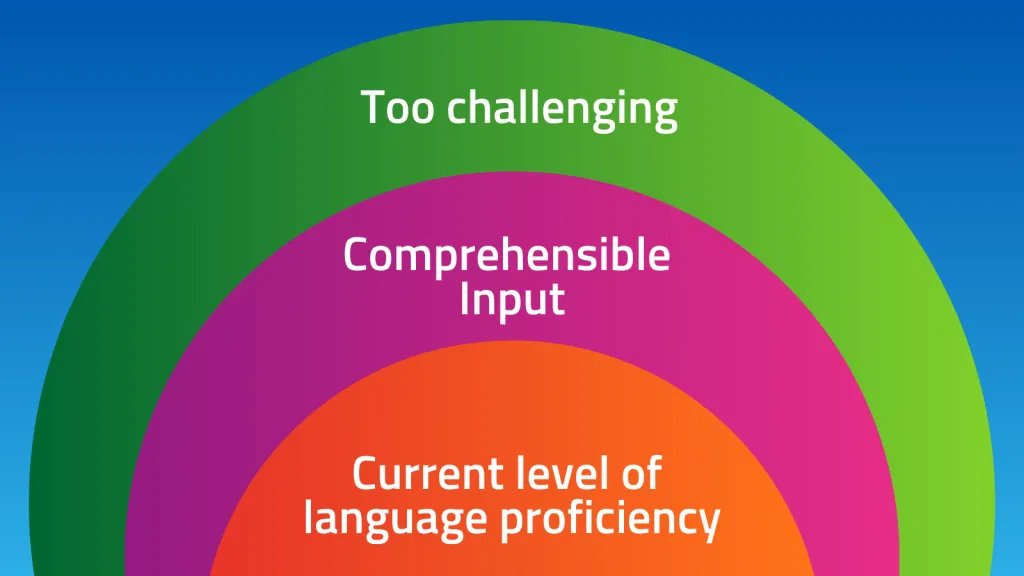Teaching with Comprehensible Input: Definition & Examples


Teaching with Comprehensible Input: Definition & Examples
The term comprehensible input can seem a bit complex and even intimidating, but a working knowledge of the concept can be transformative for educators working with English language learners (ELLs).
What is comprehensible input?
Comprehensible input is an instructional technique in which teachers provide input that allows EL students to understand most, but not necessarily all, of the language.
The concept comes from American linguist, education researcher, and activist Dr. Stephen Krashen. In his Theory of Second Language Acquisition, he states that students are able to acquire new language when instruction is delivered in language just beyond students’ current level of proficiency. Comprehensible input is simply an instructional shift when teachers provide input where students understand most, but not all, of the language.
Think of Vygotsky’s Zone of Proximal Development - you want to make sure you’re not teaching in language that may be out of reach, but rather using language that’s just beyond current understandings.
In order to make this instructional shift, with this strategy you must first understand your students’ current proficiency levels. (WIDA’s Can-Do Descriptors are an invaluable tool for understanding what students can do and express in English.) Then you need to understand the proficiency levels your students are working toward. Delivering comprehensible input is a lot like scaffolding except you aren’t just focusing on content knowledge, but also language proficiency in the domains of reading, writing, speaking and listening.
There are some unique considerations for language learners to ensure content and language input is comprehensible. Let’s go back to understanding current levels of language proficiency. If you are an Ellevation district using Strategies, you will be able access your students’ most recent language proficiency scores along with successive descriptors that indicate when they have advanced to the next proficiency level. If you are not using Strategies, you can ask your ESL/ELL specialist for that information and use the WIDA Can Do charts to think about supporting students to the next level.
Now let’s dig a little deeper on the areas of language you can modify during instruction
- Adapted Speech - Use less complex vocabulary whenever possible, limit your use of idioms and avoid run on sentences. Enunciating your words and slowing down your rate of speech will help the language learners, and probably other students, in your class tremendously.
- Visual and Graphic Supports - Any time you are able to show a photo, video clip, or use a graphic organizer, you should! Using only the listening domain to receive content is not only cognitively demanding, but it’s also less effective. Visual support will increase comprehension and overall learning.
- Objective-Driven and Chunked Instruction - Like anything in life, it’s easy to follow along if you know where you are going. Make use of this practice by posting a content and learning objective before the lesson, and referring to it often during instruction. You will also increase your students’ ability to digest the language and content if you give them time. If you break your ‘direct instruction’ or ‘lecturing’ time to no more than 10 minutes for older students and 5 minutes for younger students, you maximize their learning.
Now that you understand the concept of comprehensible input, how will you practice comprehensible input techniques in your classroom?